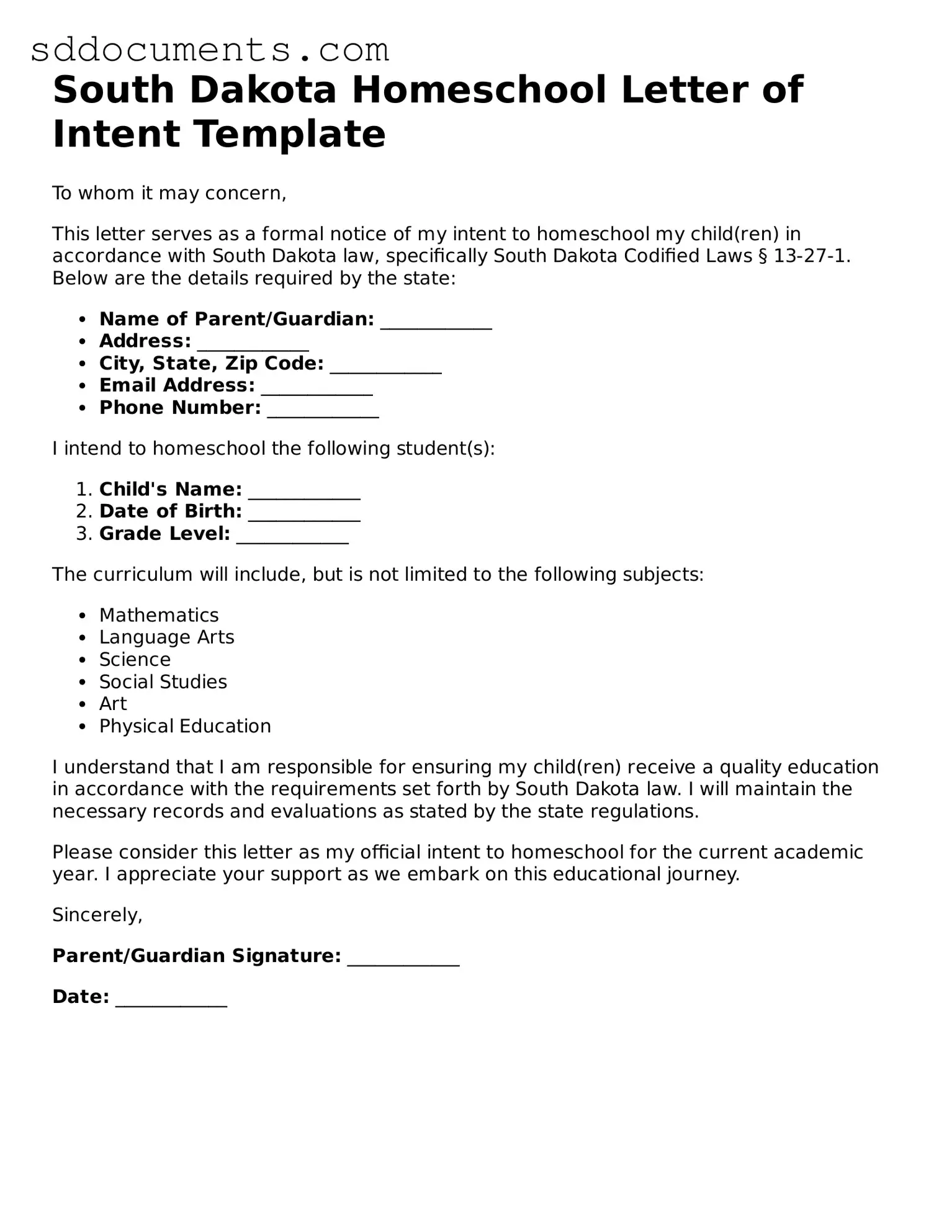Free Homeschool Letter of Intent Template for South Dakota
The South Dakota Homeschool Letter of Intent form is a document that parents must submit to formally notify their local school district of their intention to homeschool their children. This form serves as a crucial step in the homeschooling process, ensuring compliance with state regulations. For those interested in homeschooling, it is important to complete this form accurately and promptly.
Fill out the form by clicking the button below.
Customize Document Online
